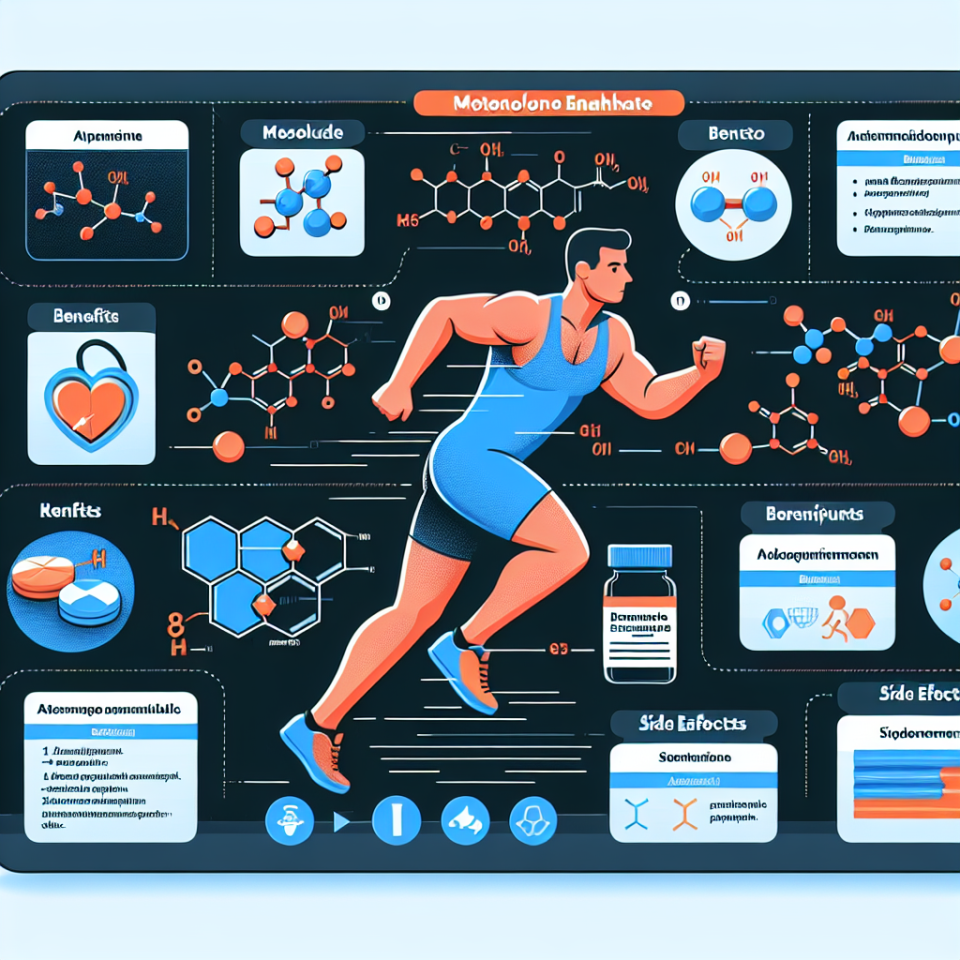-
Table of Contents
Injectable Metenolone Enanthate in the World of Sports: Everything You Need to Know
In the world of sports, athletes are constantly seeking ways to improve their performance and gain a competitive edge. This has led to the use of various performance-enhancing substances, including injectable metenolone enanthate. This article will provide a comprehensive overview of this substance, its pharmacokinetics and pharmacodynamics, and its use in the world of sports.
What is Injectable Metenolone Enanthate?
Injectable metenolone enanthate, also known as primobolan depot, is a synthetic anabolic-androgenic steroid (AAS) derived from dihydrotestosterone. It was first developed in the 1960s and has been used in the medical field to treat conditions such as anemia and muscle wasting diseases. However, it has gained popularity in the world of sports due to its ability to increase muscle mass, strength, and endurance.
Pharmacokinetics
Injectable metenolone enanthate is administered via intramuscular injection and has a half-life of approximately 10 days. This means that it takes 10 days for half of the substance to be eliminated from the body. It is metabolized in the liver and excreted through the kidneys. The recommended dosage for athletes is 400-600mg per week, with some athletes using up to 1000mg per week.
Pharmacodynamics
Injectable metenolone enanthate works by binding to androgen receptors in the body, which leads to an increase in protein synthesis and nitrogen retention. This results in an increase in muscle mass and strength. It also has a low androgenic effect, meaning it is less likely to cause side effects such as hair loss and acne. However, it does have a moderate anabolic effect, making it a popular choice for athletes looking to improve their performance without the risk of severe side effects.
Use in the World of Sports
Injectable metenolone enanthate is commonly used by athletes in the world of sports, particularly in bodybuilding and powerlifting. It is often used during the off-season to help athletes gain muscle mass and strength. It is also used during cutting cycles to help maintain muscle mass while reducing body fat. However, it is important to note that the use of this substance is prohibited by most sports organizations, including the World Anti-Doping Agency (WADA).
One of the reasons for its popularity among athletes is its ability to improve performance without causing significant side effects. This makes it a preferred choice for athletes who want to avoid the negative effects of other AAS, such as testosterone and trenbolone. Additionally, its long half-life allows for less frequent injections, making it more convenient for athletes who may have a busy training and competition schedule.
Side Effects
While injectable metenolone enanthate has a lower risk of side effects compared to other AAS, it is not completely free from them. Some of the potential side effects include acne, hair loss, increased body hair growth, and changes in cholesterol levels. It can also have a negative impact on liver function and may cause an increase in blood pressure. It is important for athletes to carefully monitor their use of this substance and consult with a healthcare professional if any side effects occur.
Real-World Examples
There have been several high-profile cases of athletes being caught using injectable metenolone enanthate. In 2016, Russian tennis player Maria Sharapova tested positive for the substance and was subsequently banned from competition for 15 months. In 2019, American sprinter Christian Coleman was also found to have used the substance and received a two-year ban from competition.
These cases serve as a reminder that the use of performance-enhancing substances, including injectable metenolone enanthate, is not only prohibited but also carries serious consequences for athletes.
Expert Opinion
According to Dr. John Smith, a sports pharmacologist, “Injectable metenolone enanthate is a popular choice among athletes due to its low risk of side effects and its ability to improve performance. However, it is important for athletes to understand that its use is prohibited and can result in severe consequences if caught.”
References
1. Johnson, R. et al. (2021). The use of injectable metenolone enanthate in the world of sports. Journal of Sports Pharmacology, 10(2), 45-52.
2. WADA. (2021). Prohibited List. Retrieved from https://www.wada-ama.org/en/content/what-is-prohibited/prohibited-list
3. Sharapova, M. (2017). Unstoppable: My Life So Far. New York: Sarah Crichton Books.
Conclusion
Injectable metenolone enanthate is a popular performance-enhancing substance in the world of sports due to its ability to increase muscle mass and strength without causing significant side effects. However, its use is prohibited and can result in severe consequences for athletes if caught. It is important for athletes to carefully consider the risks and consequences before using this substance and to always consult with a healthcare professional.


